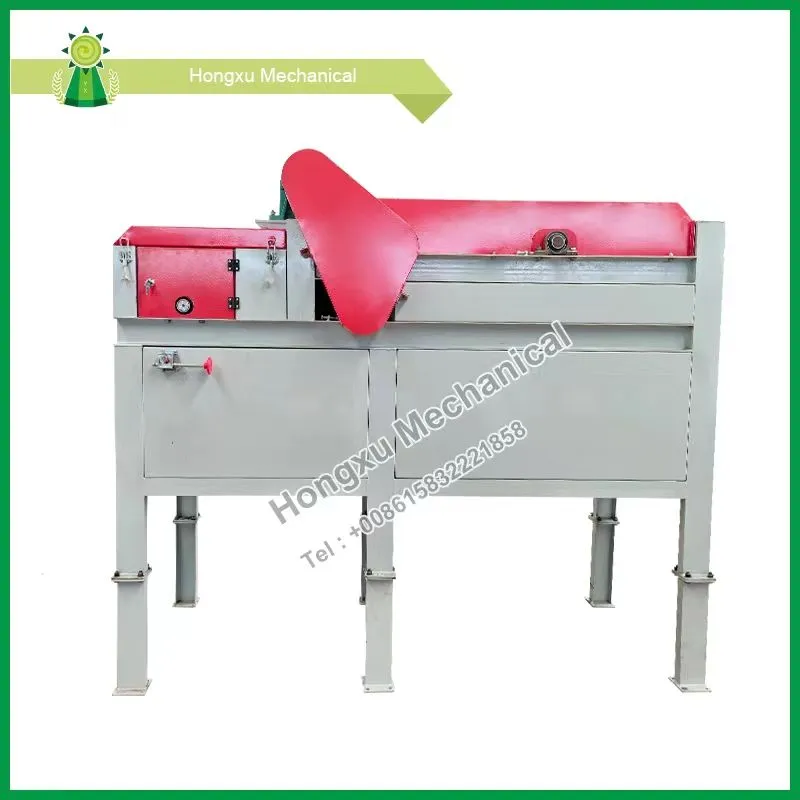The Fully Automatic Stainless Steel Sorting Machine: Revolutionizing Efficiency in Manufacturing and Recycling
2024-11-28
In today’s fast-paced industrial environment, efficiency and precision are paramount. One of the key innovations in automation technology that has transformed manufacturing and recycling industries is the Fully Automatic Stainless Steel Sorting Machine. This advanced piece of equipment is designed to separate stainless steel components from various materials with minimal human intervention, offering improved productivity, reduced labor costs, and higher-quality outputs. In this blog, we’ll delve into the workings of a fully automatic stainless steel sorting machine, its applications, and the advantages it brings to industries that deal with metals and waste management.
What is a Fully Automatic Stainless Steel Sorting Machine?
A Fully Automatic Stainless Steel Sorting Machine is an automated system used to sort stainless steel parts from a mix of materials. These machines utilize advanced sensor technologies and sorting mechanisms to identify and separate stainless steel from other metals, plastics, and non-metallic materials. The machine typically employs technologies such as magnetic induction, X-ray fluorescence (XRF), visual detection, and infrared spectroscopy to differentiate between various materials.
The machine is "fully automatic" because it operates without the need for manual intervention, allowing for continuous and high-speed sorting of materials. The sorting process is not only faster but also more accurate than traditional manual methods, reducing the chances of human error and improving the overall quality of the sorted materials.
How Does a Fully Automatic Stainless Steel Sorting Machine Work?
1. Material Input:
The mixed materials, which can include stainless steel scrap, aluminum, plastics, and other metals, are fed into the sorting machine. The materials are typically transported onto a conveyor belt that moves them through the system.
2. Detection:
The machine uses a combination of sensors, including magnetic sensors, visual cameras, and spectrometers, to identify stainless steel. Stainless steel has unique physical and chemical properties that can be detected with precision. For example, X-ray fluorescence (XRF) technology helps detect the unique metal composition of stainless steel, distinguishing it from other metals like aluminum and copper.
3. Separation:
Once detected, the stainless steel items are separated using a variety of techniques. For instance, air jets or mechanical arms may be employed to push or remove the stainless steel materials from the conveyor belt, while non-metallic or unwanted materials continue down the line for further processing.
4. Output:
The sorted stainless steel is then collected in designated bins or containers, ready for recycling, further processing, or reuse in manufacturing. The purity of the stainless steel is high, thanks to the precise sorting technology, ensuring that the material is ready for use in high-end applications.
Applications of Fully Automatic Stainless Steel Sorting Machines
1. Recycling Industry:
Stainless steel recycling is a major application of these machines. Scrap metal recycling facilities use fully automatic sorting machines to separate stainless steel from other scrap metals. This process improves the purity of the recycled stainless steel, making it suitable for use in new products like kitchen appliances, automotive parts, and industrial components.
2. Manufacturing:
In manufacturing, especially in the production of high-end stainless steel components, sorting machines ensure that only high-quality stainless steel is used in production. By removing contaminants, manufacturers can ensure the durability and strength of their final products.
3. Waste Management:
Fully automatic stainless steel sorting machines are also used in waste management to separate recyclable materials from waste streams. By efficiently sorting stainless steel, these machines help reduce waste and promote more sustainable recycling practices.
4. Construction and Demolition:
In construction and demolition industries, large amounts of scrap metal and waste are generated. Sorting machines help recover valuable stainless steel components, which can be reused in new construction projects, thereby reducing the need for new material production.
Benefits of Using a Fully Automatic Stainless Steel Sorting Machine
1. Increased Efficiency:
The automation of the sorting process significantly increases throughput, allowing businesses to process large volumes of materials quickly. Sorting machines can operate 24/7 with minimal downtime, boosting overall productivity.
2. Cost-Effective:
While the initial investment in a fully automatic sorting machine may be high, the long-term savings in labor costs and the increased efficiency of the sorting process quickly offset the cost. Additionally, the machine's ability to accurately separate stainless steel reduces contamination, leading to higher-quality recycled materials.
3. Higher Precision and Accuracy:
Automatic sorting machines are much more accurate than human-operated systems, ensuring that the sorted stainless steel is of the highest quality. This is particularly important for applications where purity and material quality are critical, such as in the production of food-grade or medical stainless steel.
4. Reduction of Human Error:
Since the machine operates autonomously, it eliminates the risk of human error in the sorting process. This ensures consistent and reliable results, leading to better material quality and fewer processing mistakes.
5. Environmentally Friendly:
By improving the efficiency of stainless steel recycling, these machines contribute to the reduction of waste. Recycled stainless steel requires less energy to process compared to producing new stainless steel from raw materials, which helps reduce carbon emissions and conserve natural resources.
The Fully Automatic Stainless Steel Sorting Machine is an indispensable tool in the recycling and manufacturing industries, offering an efficient, precise, and cost-effective way to separate stainless steel from a variety of materials. By automating the sorting process, businesses can improve the quality of their materials, increase operational efficiency, and reduce labor costs. Furthermore, the environmental benefits of using these machines in recycling operations cannot be overstated, as they contribute to reducing waste and conserving valuable resources. As industries continue to prioritize sustainability and efficiency, the demand for automated sorting solutions like these will only increase.



